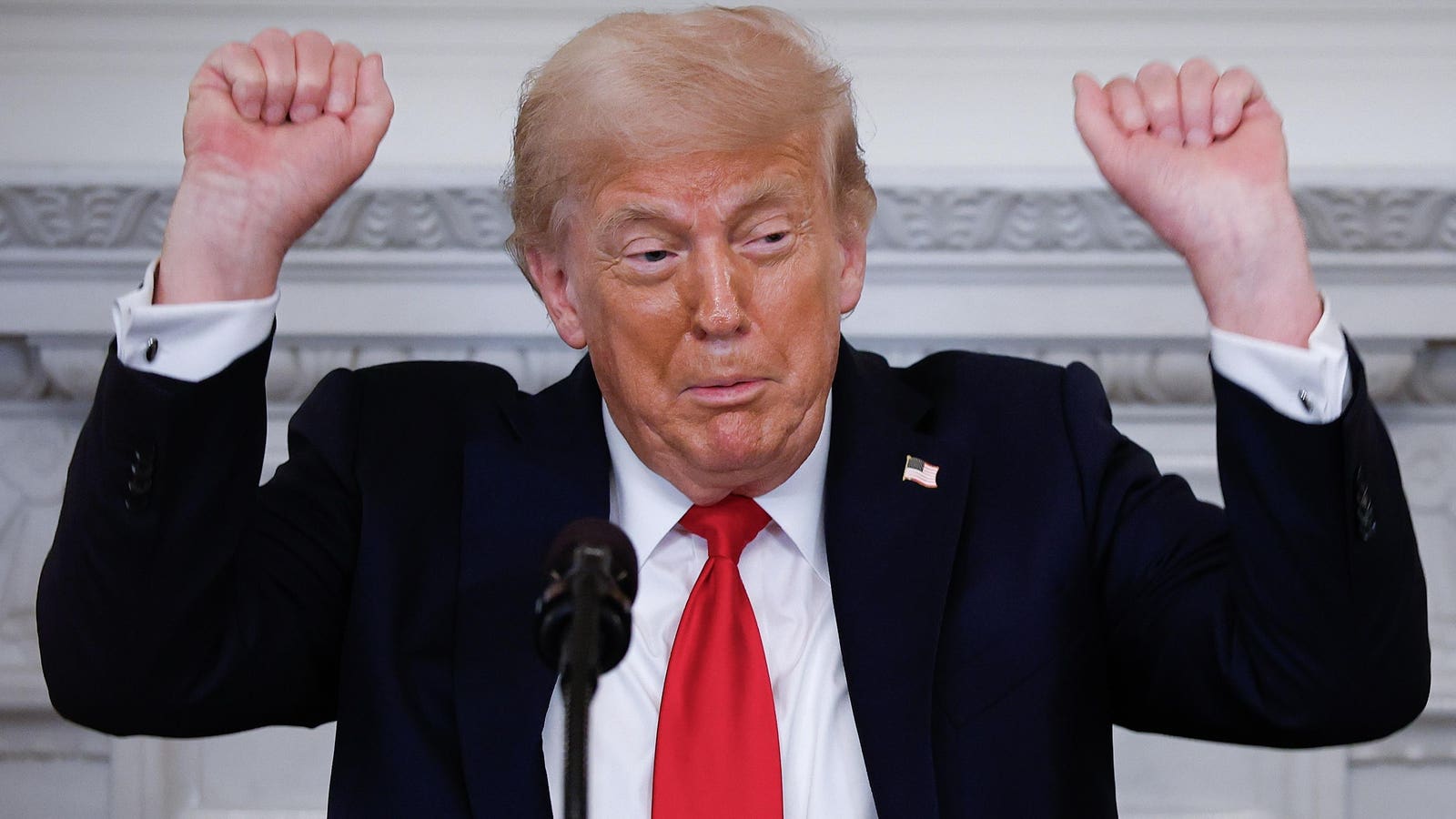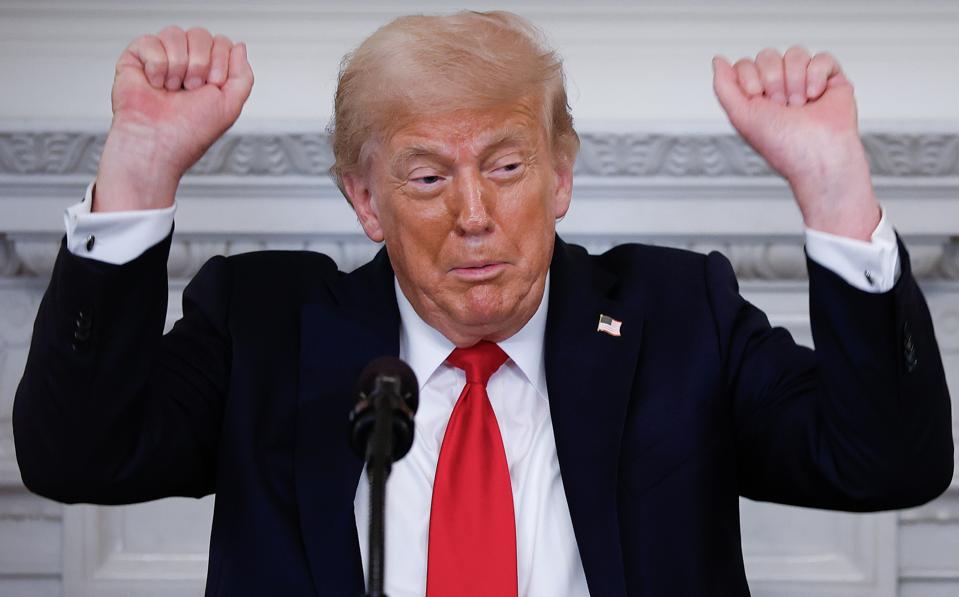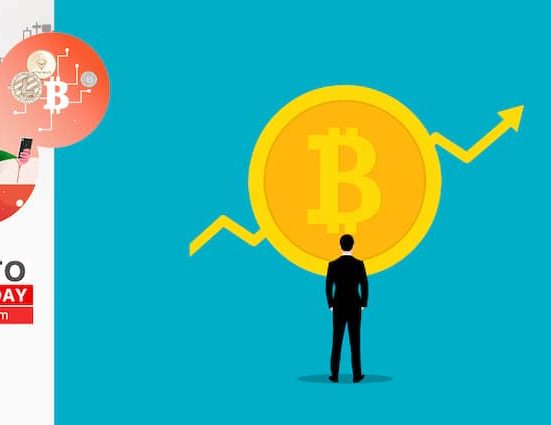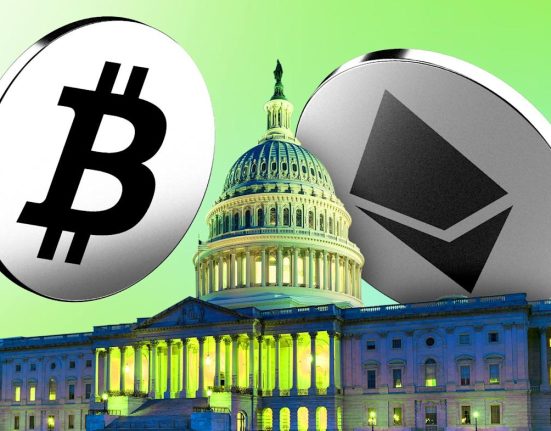Bitcoin has seen its price rocket higher this year, topping an explosive 2024 that saw Wall Street charge into crypto—though some are predicting the bitcoin price bull run could be just getting started.
Sign up now for CryptoCodex—A free newsletter for the crypto-curious
The bitcoin price has doubled since this time last year, with the crypto market looking “eerily similar” to the situation last summer that catapulted bitcoin and other major cryptocurrencies including ethereum and XRP higher.
Now, as JPMorgan suddenly flips on what could be a bitcoin price game-changer, U.S. president Donald Trump has signed an executive order that will make it easier for bitcoin, crypto and other alternative assets like private equity and real estate to be included in 401(k) retirement accounts—which hold a combined $12.2 trillion.
Sign up now for the free CryptoCodex—A daily five-minute newsletter for traders, investors and the crypto-curious that will get you up to date and keep you ahead of the bitcoin and crypto market bull run
U.S. president Donald Trump has this week signed an executive order that is expected to open up 401(k) retirement accounts to alternative assets—including bitcoin, ethereum, XRP and other cryptocurrencies.
Getty Images
“Alternative assets, such as private equity, real estate, and digital assets, offer competitive returns and diversification benefits,” a White House fact sheet read.
Trump signing the long-rumored order has boosted the bitcoin price, pushing it toward $120,000 per bitcoin for the first time since last month, while ethereum has surged 21% this week, breaking back above $4,000 per ether for the first time since December last year.
XRP, one of the best performing major cryptocurrencies over the last year with a near 500% gain, has climbed 12% this week, helping the combined crypto market top $4 trillion.
“This could mark a major milestone in bringing digital assets into the mainstream financial infrastructure, opening the door to long-term adoption by everyday Americans,” Antony Agoshkov, cofounder of Marvel Capital, said in emailed comments.
The order gives the Department of Labor 180 days to review rules with any changes not expected to be seen immediately in bitcoin and crypto markets.
“The Trump executive order opening the door to the inclusion of crypto and private assets in 401(k) retirement plans opens the way to greater choice and gives investors more options,” Katalin Tischhauser, head of research at Sygnum Bank, said via email.
“It is another bullish driver for the crypto market as the relatively small market capitalisation means fund flows can have a significant impact on price.”
In May, the Department of Labor scrapped guidance from 2022 that urged “extreme care” before any investment companies added crypto to retirement account options.
“The announcement has fueled optimism around future institutional inflows, especially given the size of the U.S. defined contribution market, which totals around $10 trillion,” Joel Kruger, market strategist at LMAX Group, said in emailed comments.
“A more favorable regulatory tone is taking shape in Washington. The Trump executive order follows a series of signals from lawmakers aimed at establishing clearer guardrails around digital asset classification and access.”
While there is currently no prohibition on retirement plan operators adding these types of investments, the order is expected to result in a more diverse range of options for people.
“This order isn’t about the government saying ‘crypto belongs in 401(k)s.’ It’s about the government getting out of the way and letting people make their own decisions,” Matt Hougan, chief investment officer at Bitwise, said in an emailed note.
Sign up now for CryptoCodex—A free newsletter for the crypto-curious
The bitcoin price has surged to an all-time high this year, topping $123,000 per bitcoin, and boosting the combined ethereum, XRP and crypto market to over $4 trillion.
Forbes Digital Assets
The latest bullish signal out of the Trump White House—following Trump dismantling Biden-era crypto restrictions on Wall Street, Trump ordering the creation of a bitcoin strategic reserve and crypto stockpile that’s expected to include ethereum and XRP among others, and the passage of the Genius Act stablecoin bill—are helping to “shift sentiment” among traders, but have yet to translate into meaningful price moves.
“Trump’s latest moves—from expanding 401(k) access to crypto, to pushing gold into the spotlight—could shift sentiment, but so far the response has been muted,” 10x Research founder Markus Thielen said in an emailed note.
“Ethereum, meanwhile, is flashing record address activity and surging prices, yet much of the move appears narrative-driven rather than grounded in fundamentals. Both assets are now pressing against key technical boundaries where momentum could either accelerate or stall sharply.”
Bitcoin and crypto market watchers remain bullish for the rest of 2025, however, some are warning the bitcoin price and crypto market could crash next year.
“My view is that once we complete the bull cycle at circa $140,000-$145,000, we will see a corrective bear market in 2026, but I am not looking for a deep correct, but likely a move to $90,000 to $100,000,” John Glover, chief investment officer of Ledn, said in emailed comments, adding: “I know this goes against the popular view that we are going to hit the extreme prognosticator’s views of $250,000, $500,000, or even $1 million in 2025 or 2026.”
Meanwhile, Trump also signed a separate executive order targeting the “debanking” of people and businesses on political grounds, which will “ensure that Federal regulators do not promote policies and practices that allow financial institutions to deny or restrict services based on political beliefs, religious beliefs or lawful business activities, ensuring fair access to banking for all Americans.”
The “digital assets industry has also been the target of unfair debanking initiatives,” according to a White House fact sheet, with Caitlin Long, the chief executive of crypto-focused Custodia Bank, cheering the addition of the Small Business Administration as an overseer of the federal banking regulators.








